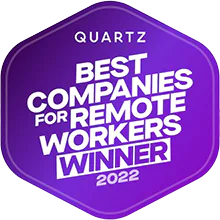Wonolo
When Google Glass first entered the public eye, it was hailed as a groundbreaking first step in wearable technology. But when the product reached consumers, it was swiftly met with ridicule for its silly design, bugs, poor battery and concerns over privacy. The project came to an abrupt end and it never went to wide release.
The vision of streets filled with fashionable hi-tech glasses may now rest with Snapchat Spectacles, but the Google Glass is now back with a focus on utility, not fashion. Newly titled the Glass Enterprise Edition, the glasses are marketed towards businesses in manufacturing, logistics, and healthcare where the workers will be the one wearing them, not the vague group of “Explorers” it initially targeted.
In short, it’s an augmentative tool intended to boost productivity, reduce costs, and improve conditions for workers in places like factories, plants, and warehouses.
Source: Google Glass
Hands-Free Device With Instant Access to Important Information
The Google Glass at its core is a wearable computer, which is particularly helpful in settings where workers perform manual labor that occupies their hands at all times. With the computer clipped in front of their eyes, warehouse workers don’t need to stop what they’re doing in order to perform other tasks, like looking at instruction manuals, training material, or even to leave their spots to ask a co-worker for help.
For instance, at Boeing – one of the companies Google has been working with behind the scenes to develop the new Glass – this difference came in the form of enhanced efficiency during the difficult wire-framing process. When tech commentator Steven Levy went to visit their factory, he saw the improvement it made:
“It was like the difference between putting together Ikea furniture with those cryptic instructions somewhere across the room and doing it with real-time guidance from someone who’d constructed a million Billys and Poängs.”
In another scenario, the Glass’s augmented reality aided warehouse workers at DHL during the picking process, with the Glass showing them the item’s location rather than using voice commands. According to Adrian Kumar, vice president of the unit, the Glass most benefits ecommerce operations, especially during peak seasons when many temp workers are employed who aren’t familiar with the warehouses:
“A lot of the large operations need help supporting e-fulfillment, especially with lots of [products] that might only be available online. It really drives up warehouse complexity … These are people off the street who are not familiar with our warehouses, don’t know where anything is, and we see huge potential for that type of situation, especially with training.”
When the Glass can instantly provide the type of help new or temporary workers need, it eliminates the need for them to rely on managers or colleagues, thus improving efficiency for everyone across the board. Moreover, the ability of the Glass to scan barcodes means it can pinpoint an item’s exact location and reveal the fastest route to the product, which reduces the time it takes for even the most experienced workers to pick and pack items.
The Trifecta Benefits of Glass Enterprise
For warehouses, the potential benefits of the Glass Enterprise are threefold:
- It saves time.
- It increases safety.
- It reduces costs.
Workers at the DHL unit saw a time reduction by 25% once they started using the Glass, and the company plans to implement the technology in 2000 warehouses across the globe. The company claims it improved their overall supply chain efficiency by 15%. GE claims a 46% decrease in the picking and packing process, while Picavi saved time by 30% while also increasing safety.
The hands-free factor means increased safety for workers in dangerous environments, and the lightweight, easily adjustable nature of the Glass suits all workers, including those with impaired visions or prescription lenses. It connects to safety glasses and frames, as well as to wifi, allowing workers to remain connected to the network at all times.
The hours it saves may very well be worth the cost for businesses, who can sign up as a partner to customize the Glass to their needs, joining the ranks of Boeing, GE, DHL and Volkswagen. With improved battery life, workers can use the Glass for eight-hour shifts although constant streaming will require charging.
Future Possibilities
The Glass has come a long way since its limited release in 2012 as the latest tech gadget, futuristic fashion item and tool for outdoor adventurers. The shift in its product focus seems successful, with many enterprises hopping onboard to implement the tool into their own processes.
For the most part, the current vision for the Enterprise Edition is that it will aid workers in specific industries as a useful tool that:
- Enhances efficiency by eliminating dependency on other workers and managers
- Does away with physical manuals that distract attention away from the task at hand
- Improves accuracy rates with augmented vision and calculations
- Livestreams a task to show others for help or feedback
- Saves time and costs overall.
Available only to businesses, the Glass EE has the potential to branch out into more public spaces in time, such as retail floors where workers can use it to access inventory in storage, or even to consumers who can use it during furniture assembly.
But for now, it looks like Google has finally found the right home for its Glass, away from the blitz of the consumer-oriented branding that ended in failure, to the warehouses and factories behind the scenes where workers can appreciate its utilitarian features to maximum advantage.
If the Glass boosts productivity by streamlining processes and improving accuracy in detailed work like assembly and wireframing, the benefits it brings are worth at least a consideration for all businesses interested in implementing the latest technology to improve worker efficiency.





